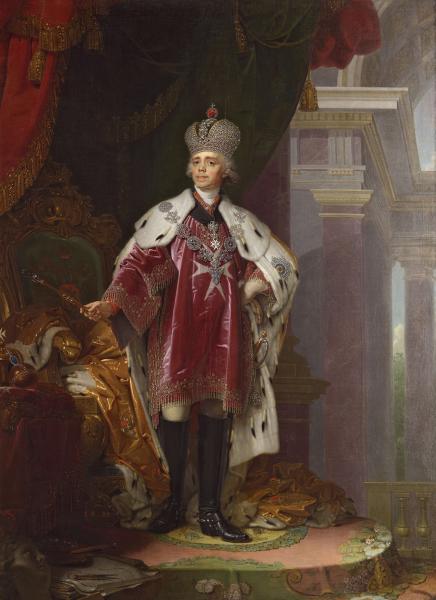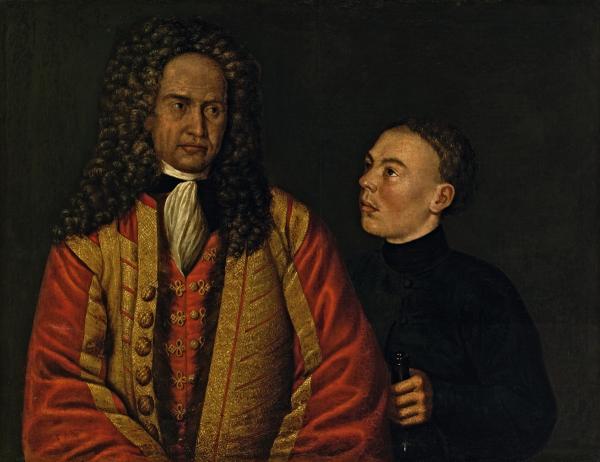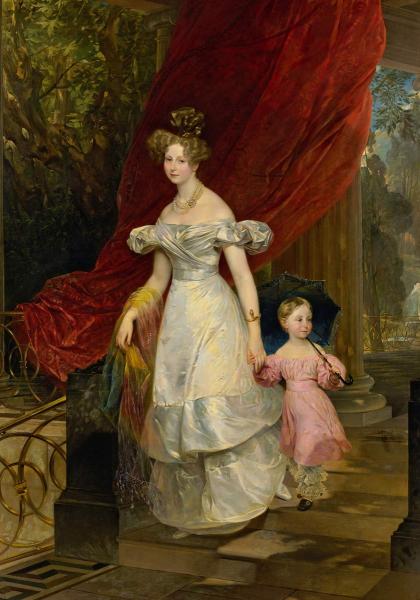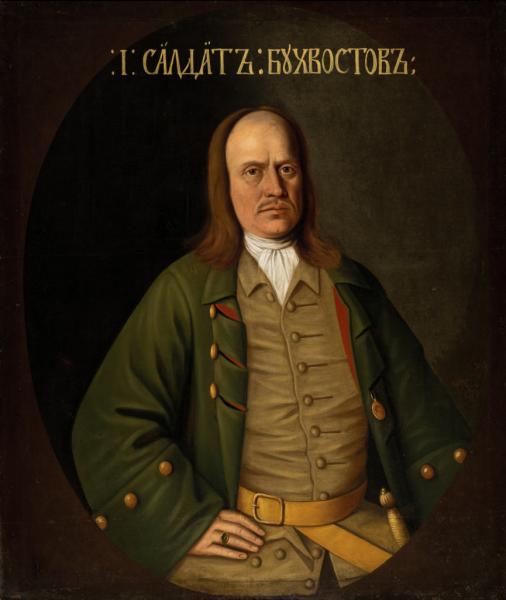The artist is Borovikovsky

Pavel I Petrovich (September 20 / October 1, 1754, St. Petersburg − March 12/24, 1801, St. Petersburg) − The son of Grand Duke Peter Fedorovich (Peter III) and Grand Duchess Ekaterina Alekseevna (Catherine II). Emperor All -Russian, Grand Master of the Maltese Order. Killed as a result of a noble conspiracy. Reigned from November 6/17, 1796 to 12/24 March 1801.
The 400th anniversary of the Romanov house. SPb, 2013. With. 112.
Pavel I (1754–1801) – Russian emperor since 1796. Son of Peter III and Catherine II. “Russian Hamlet”, as it was called, is one of the tragic figures on the Russian throne. On the night of March 11, 1801 he was killed in his newly built residence – Mikhailovsky castle.
Pavel I is depicted in a large imperial crown and a mining mantle, in the robe (Dalmatics) of the grandmaster of the Maltese Order, with the Orders of St. Andrew the First -Called (chain and star) and St. John of Jerusalem (Cross).
On the portrait of Borovikovsky, written about a year before the death of the emperor, Pavel I is depicted in a large imperial crown and a mining mantle, in the robe (Dalmatics) of the grandmaster of the Maltese order, with the orders of St. Andrew the First -Called (a chain on his chest and a star on the mantle on the right) and St. John) Jerusalem (white cross on the chest).
In September 1798, after the Malta island occupied by the French, Paul I issued a manifesto on the adoption of the Maltese Order under his protection. The solemn entry of the Emperor was held by the Grand Master on November 29 of the same year. Petersburg thus became the capital of the Catholic spiritual-people of the Order, founded by crusaders in the XI century.
The attempt of Paul I to approve the Order practice in Russia had deep goals – giving secular state reforms of the sacred, consecrated by the Church of meaning, and was a kind of return to the field of spiritual values after a long series of years of Catherine of social education.
At the very feet of the emperor, as the foundation of the whole theocratic state he was built, the circus, the instrument of the free mason is depicted. In this case, he is also rather an attribute of a medieval ritual-symbolic picture than the actual support by the emperor of the Masonic organization. The compasses best characterize the role of the emperor as the creator of the new statehood in which the spiritual component is almost more important than economic prosperity. Pavel here is the master of the medieval construction workshop, that is, the grandmaster of the Maltese Order. The purity of thoughts, the service of the Fatherland, the protection of Christianity and the support in state matters on religion, the unification under one royal crown of the secular and religious role of the ruler – this is how the programs of the Russian emperor are read at the huge ceremonial portrait at the outcome of the XVIII century, this is the image of the emperor Paul I in art, created by Borovikovsky.
Programs/Films about this work in the media text:

Borovikovsky c. Portrait of Emperor Paul I in coronation vestments
Creation year: 2014 | Computer movie | Language: | Duration: 08:54
The film contains a detailed story about the Museum in 1897 from the Romanov Gallery of the Winter Palace Portrait Paul I in the vestigation of the grandmaster of the Maltese Order.


